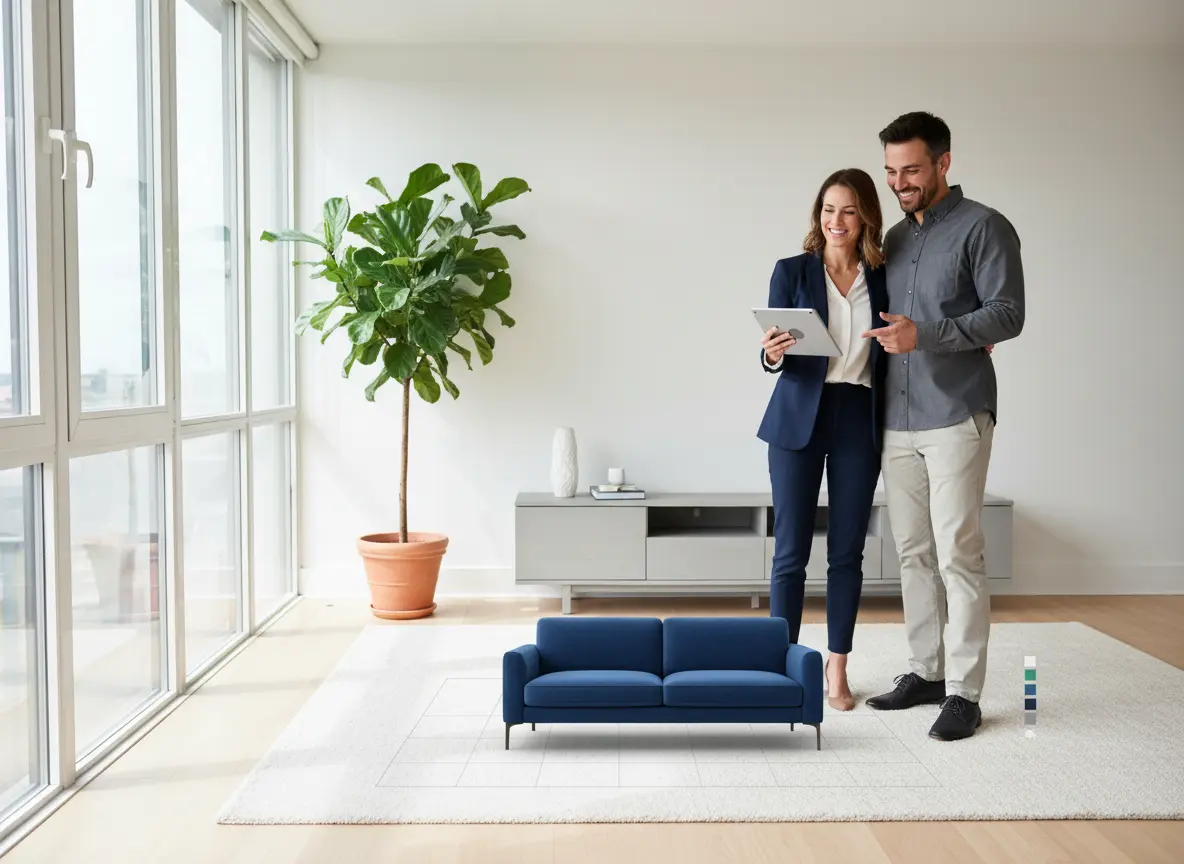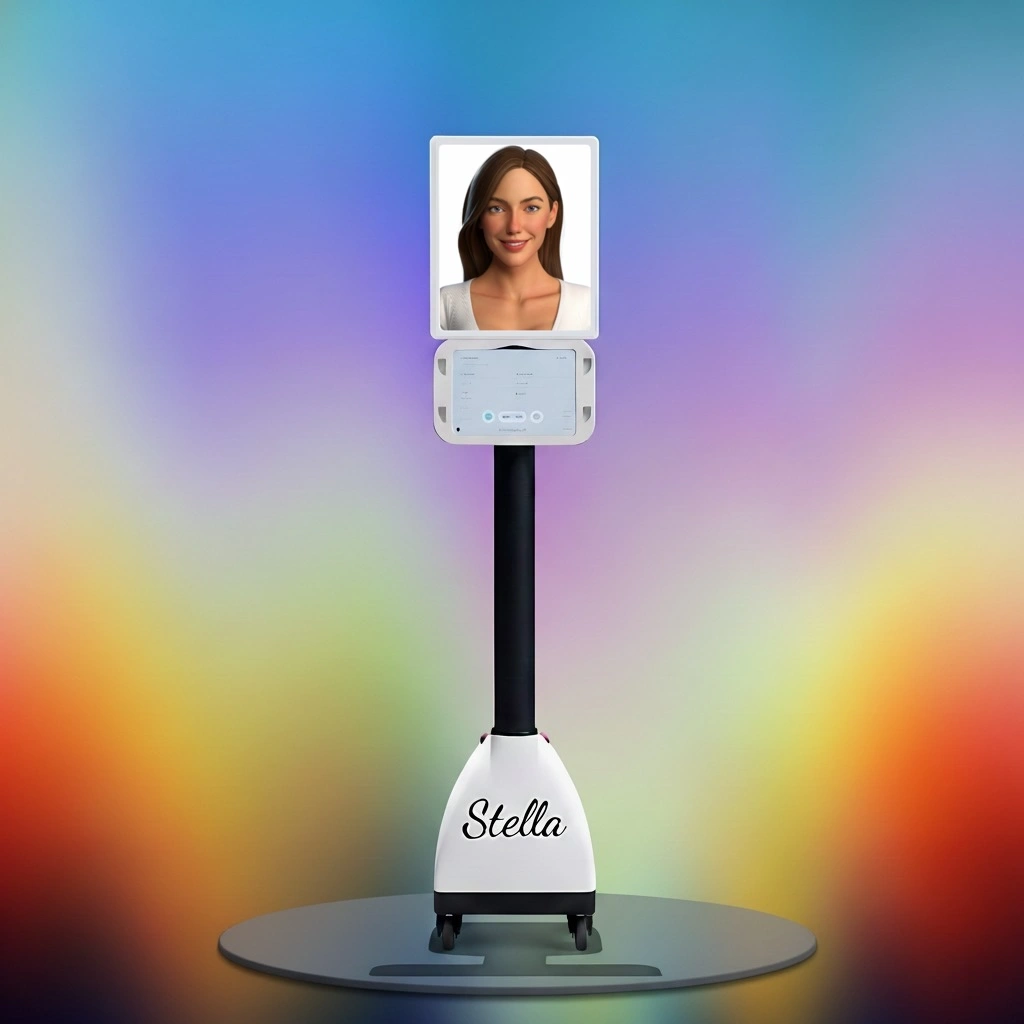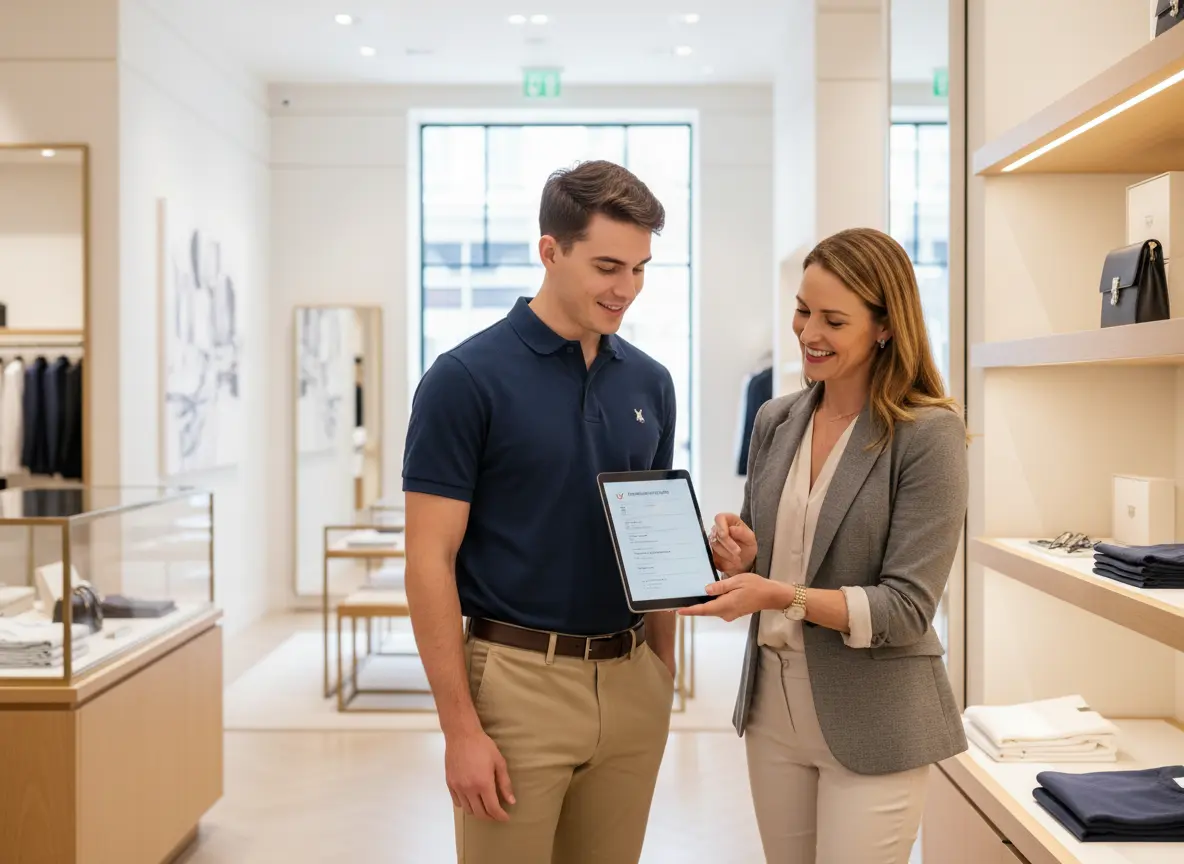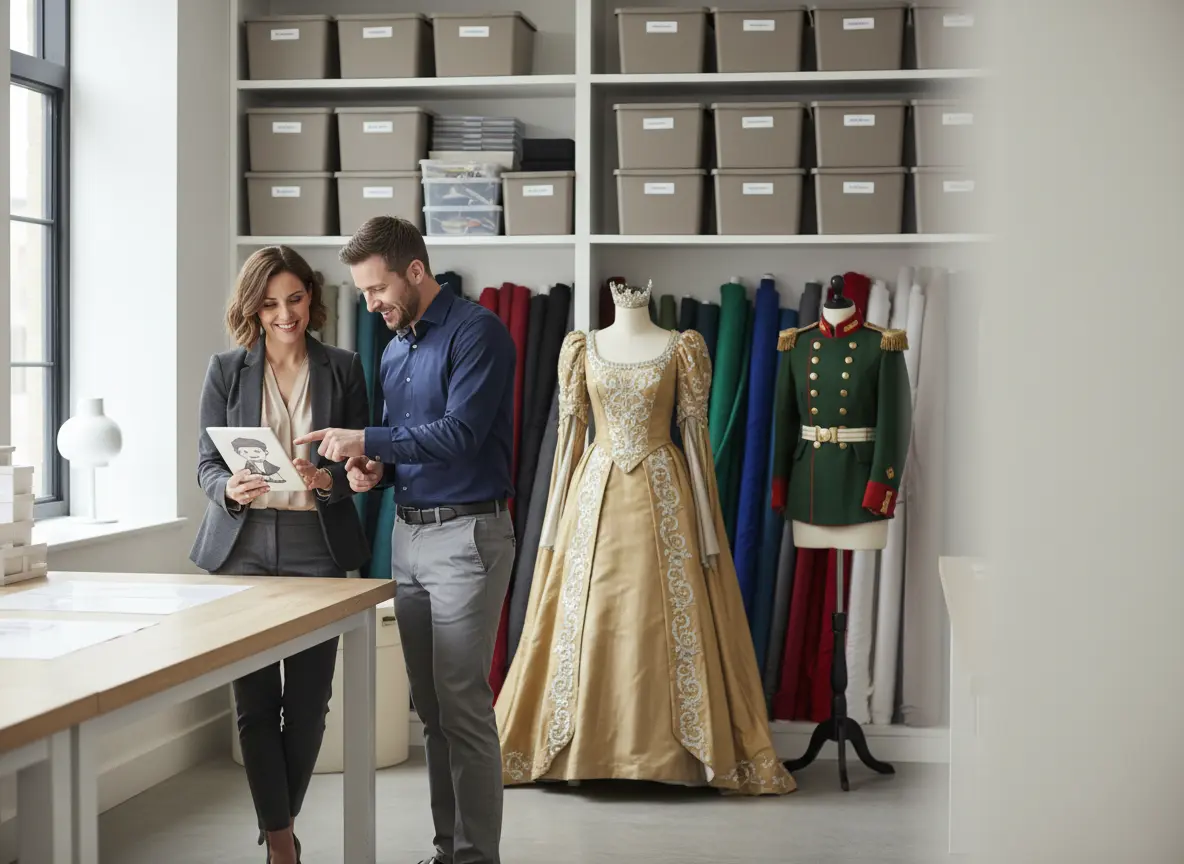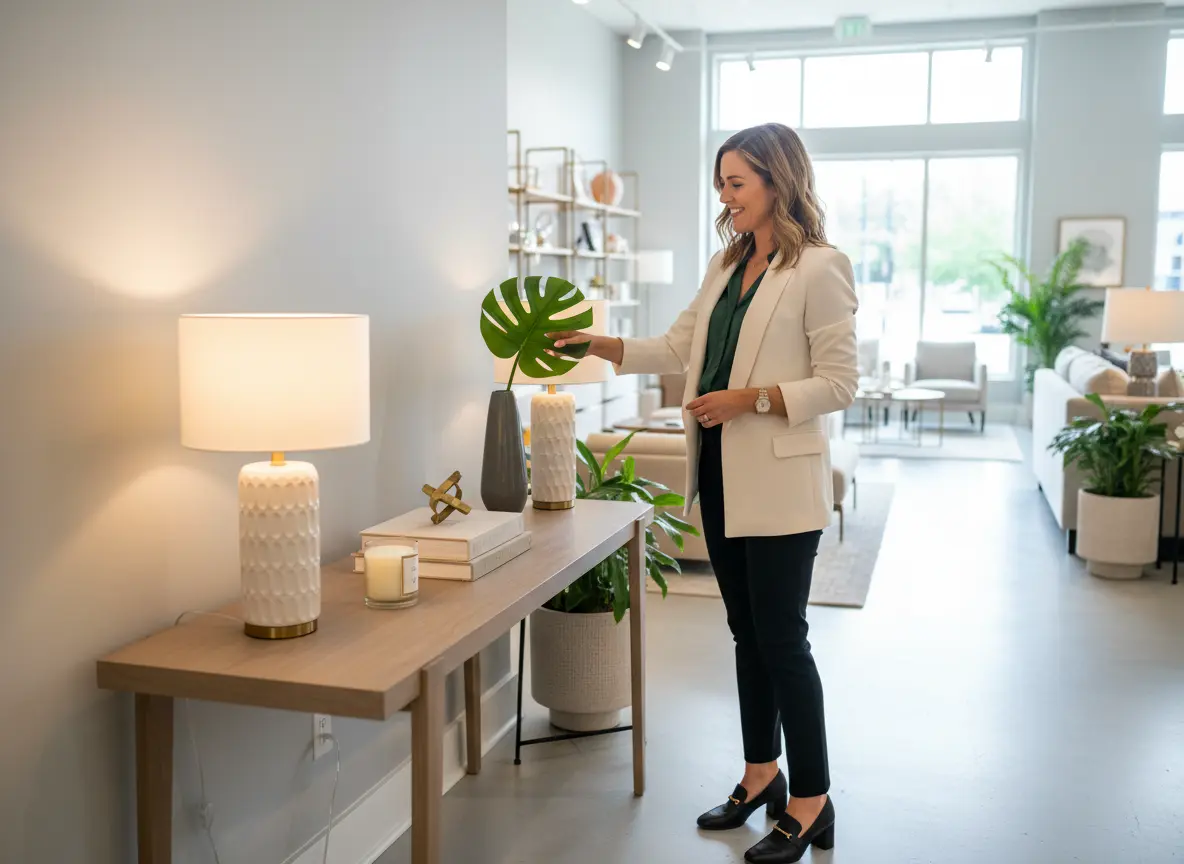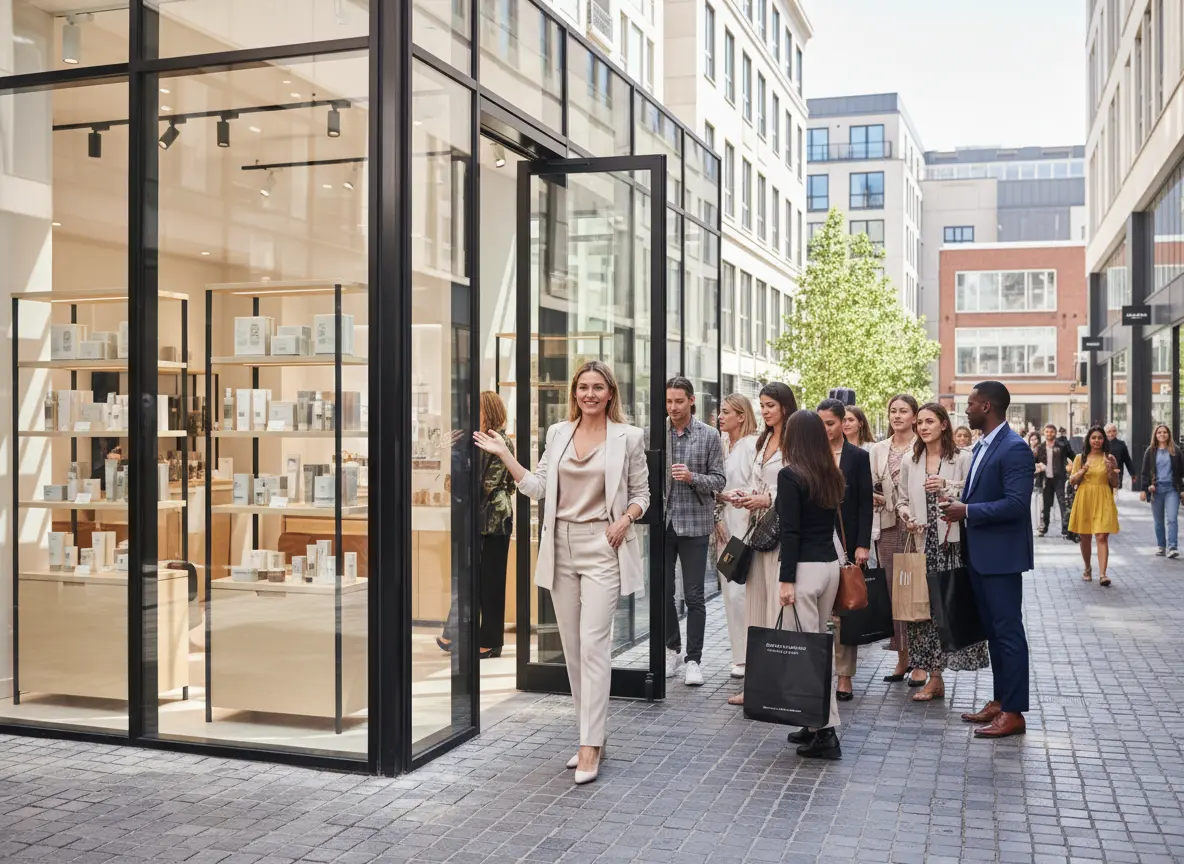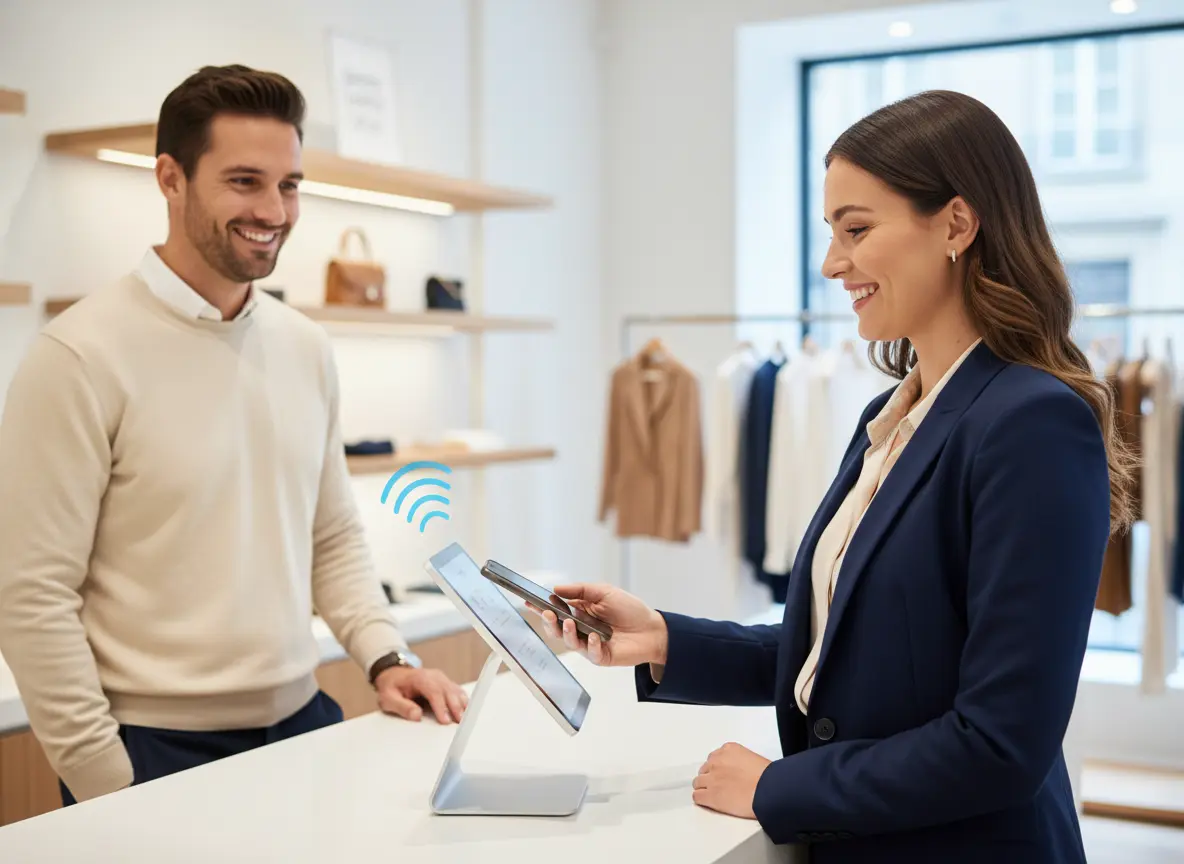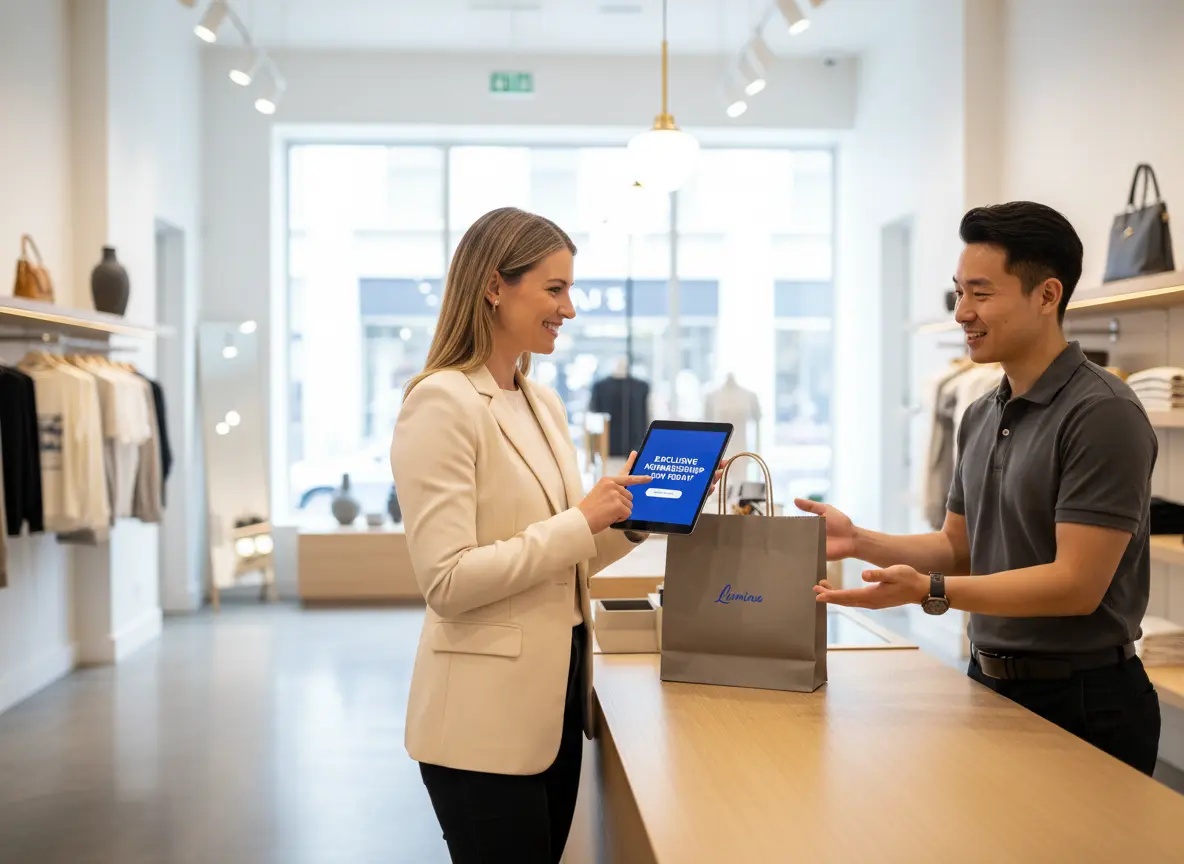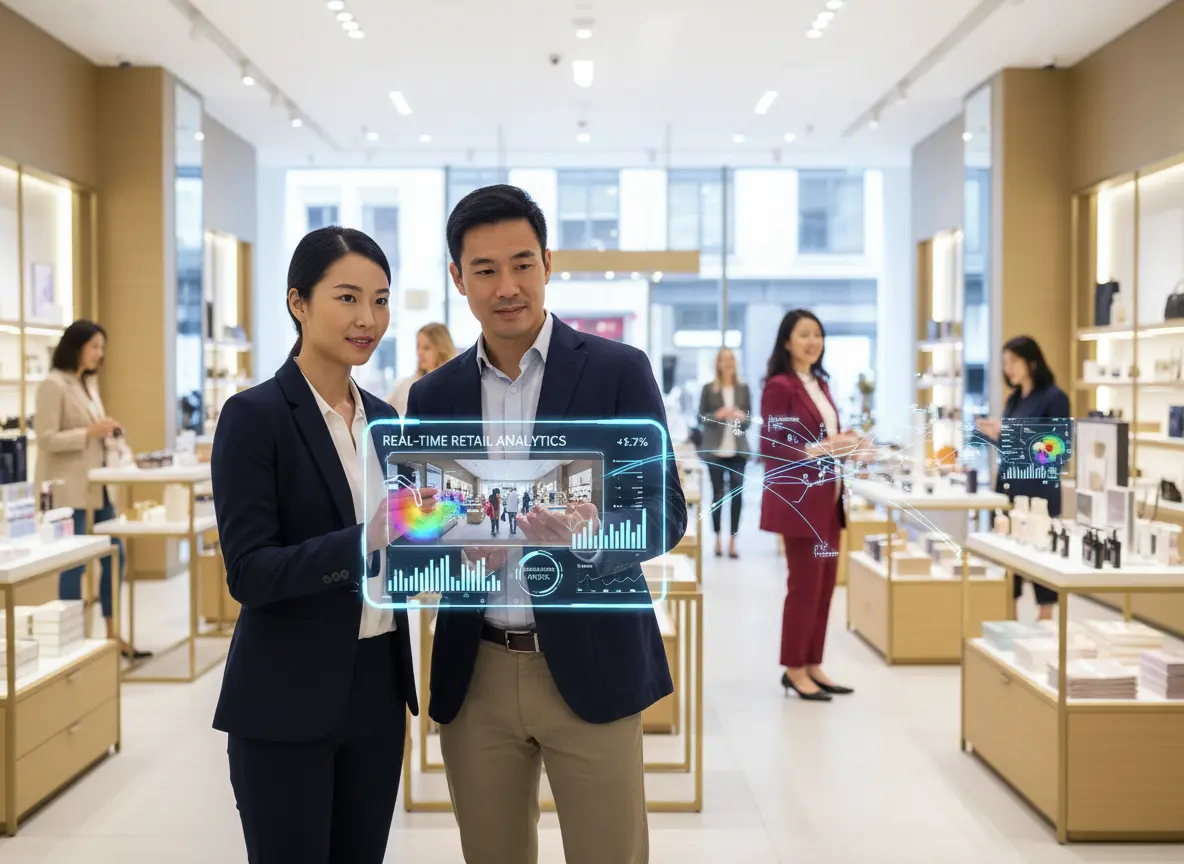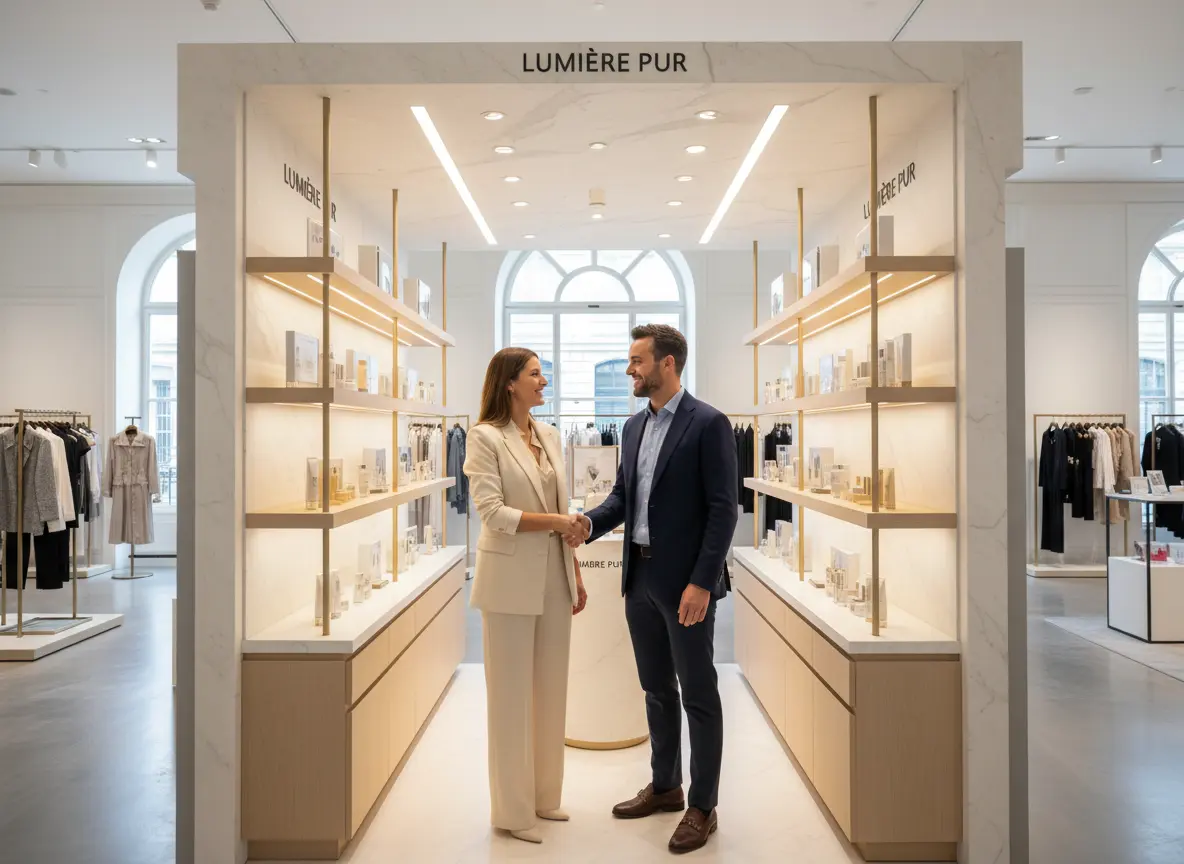So, They Love the Sofa. Are They Going to Buy It? (Spoiler: Probably Not)
Let’s paint a picture. A couple walks in. Their eyes light up. They’ve found it: The One. The perfect chesterfield sofa. It’s the right color, the perfect tufting, and it feels like sitting on a cloud that’s been blessed by an angel. They’re in love. You can practically hear the commission check cha-chinging in your head.
Then comes the question. The one that sends a shiver of dread down the spine of even the most seasoned furniture salesperson. The wife turns to her husband, her brow furrowed with a sudden, devastating doubt, and asks, “But… will it fit?”
Suddenly, a crumpled napkin with some hastily scrawled numbers appears. A frantic debate about the width of a doorway ensues. Confidence evaporates, replaced by a fog of uncertainty. They promise to “go home and measure” and walk out the door, never to be seen again. Sound familiar? Of course it does. This isn’t just a sale you lost; it’s a symptom of the biggest, most persistent problem in furniture retail: the imagination gap. Your showroom is a curated paradise, but their living room is a chaotic reality of oddly placed windows, beige walls, and a dog that sheds. Customers can’t bridge that gap, so they don’t buy.
Until now. What if you could hand them a magic wand that instantly teleports that perfect sofa from your showroom floor directly into their living room? That’s not science fiction, my friend. That’s Augmented Reality (AR), and it’s the most powerful tool you’re probably not using to close sales.
Why “Will It Fit?” Is Killing Your Sales (And How AR Fixes It)
The hesitation that kills the deal is born from a very real fear: buyer's remorse. A sofa isn't like a t-shirt you can easily return if you don't like it. It's a logistical nightmare involving delivery crews, potential damage, and a whole lot of hassle. AR directly attacks this fear by eliminating the guesswork, turning a customer’s phone into a portal of pre-purchase confidence.
The Vicious Cycle of Buyer's Remorse
Let's talk about returns. They are the bane of our existence. According to a 2023 report by the National Retail Federation, total retail returns amounted to a staggering $743 billion in merchandise. For furniture, where a single return can wipe out the profit from several sales, the stakes are even higher. The primary reasons? “It didn’t fit through the door,” “It looks too big for the room,” or the dreaded, “The color just doesn’t work with my rug.”
AR smashes this cycle. When a customer can use their phone to see a true-to-scale 3D model of that chesterfield sofa sitting right between their ficus tree and their TV stand, the doubt disappears. They aren’t guessing if it will fit; they know. They can walk around it, see it from every angle, and check clearance for doorways and walkways. This isn't just a cool gimmick; it's a powerful psychological tool. A study by Shopify revealed that products with 3D/AR content showed a 94% higher conversion rate than those without. You’re not just showing them furniture; you’re showing them their future living room, and it looks fantastic.
Beyond Dimensions: The Scale and Style Conundrum
A tape measure only tells part of the story. A 90-inch sofa might technically fit against a 120-inch wall, but will it feel like a monolithic beast that swallows the entire room? Conversely, will that chic, minimalist armchair look like doll furniture in their cavernous, open-concept great room? This is the problem of scale, and it’s where most customers—and their crumpled napkin measurements—fail spectacularly.
AR excels at demonstrating scale. It’s one thing to read dimensions on a tag; it’s another entirely to virtually experience the volume and presence of a piece in your own space. It allows customers to appreciate the visual weight of the furniture, not just its footprint. The same goes for style and color. That mustard yellow velvet chair is a showstopper under your perfectly calibrated showroom lights. But next to their existing seafoam green walls? It might look less “bold design choice” and more “circus has come to town.” By letting them see the color and texture in their own lighting and alongside their own decor, AR prevents a style disaster before it ever leaves your warehouse.
Bridging the Gap Between Inspiration and Purchase
Having the technology is one thing; making it a seamless part of your sales process is another. The goal is to integrate AR so naturally that customers see it as an essential service you provide, not a complicated tech hurdle. It’s about making your store the obvious choice because you make buying furniture easier and safer than anyone else.
Making Every Employee an AR Evangelist
Your sales team is the front line. If they’re not excited about AR, your customers never will be. Training is crucial. Arm them with the language and the process to introduce AR early and often. Instead of waiting for the dreaded “will it fit?” question, they should be proactively offering the solution.
- Old way: "The dimensions are on the tag."
- New AR way: "I know you love this sectional. Let's take 30 seconds and see exactly how it will look in your family room right now. Just scan this code with your phone."
This is also where automation can give your team a huge assist. While your staff is helping a family choose between fabric swatches, an in-store robotic assistant can tee up the AR conversation. For example, Stella can greet shoppers at the entrance and say, "Welcome! Before you fall in love with a piece, make sure it fits. Just look for the QR code on any tag to instantly see our furniture in your own home with your phone." By introducing the concept upfront, Stella normalizes the technology and plants the seed, making your sales associates' jobs even easier when it comes time to close.
Implementing AR Without an IT Meltdown
Alright, so you’re sold on the why. But the how probably sounds expensive, complicated, and like a massive headache you don't have time for. Relax. Implementing AR today is surprisingly straightforward and more affordable than you think. You don’t need an in-house team of Silicon Valley wizards to make this happen.
Choosing the Right AR Platform (Hint: It's Easier Than Assembling a Flat-Pack Bookcase)
The single most important decision you’ll make is choosing a platform that is dead simple for your customers. If they have to download an app, you’ve already lost half of them. The gold standard is Web-based AR (WebAR). With WebAR, a customer simply scans a QR code on a price tag or clicks a "View in Room" button on your website, and the experience launches instantly in their phone’s web browser. No apps, no fuss.
When evaluating providers (like Threekit, Cylindo, or built-in e-commerce solutions), focus on a few key things:
- Ease of Use: Is it a one-scan or one-click process?
- Model Quality: Do the 3D models look realistic in terms of texture, color, and lighting?
- Performance: Does it load quickly on an average mobile connection?
- Integration: How easily does it plug into your existing website and in-store signage?
Think of it as an investment, not an expense. The cost of a good AR platform is often far less than the cost of just a few returned sectionals.
Getting Your Products Ready for Their 3D Debut
To use AR, you need 3D models of your furniture. This used to be the most daunting part of the process, but it's gotten much easier. You have a few options:
First, ask your manufacturers. Many of the larger brands have already invested in creating 3D files for their products and are often willing to share them with their retail partners. It costs you nothing to ask!
If that’s not an option, you can hire a 3D modeling service. There are countless agencies and freelancers who specialize in creating high-quality, photorealistic 3D models from simple photographs and product dimensions. Yes, there's a cost per model, but the ROI is massive. Don’t feel like you have to digitize your entire 1,000-piece catalog overnight. Start smart. Pick your 20 top-selling items or the 5 pieces that get returned most often for size issues. Prove the concept, see the lift in sales and reduction in returns, and then expand from there.
A Quick Reminder About Stella
While you’re busy revolutionizing your sales process with AR, don't forget the first five feet of your store. An AI retail assistant like Stella ensures every customer is greeted, informed about your new tech, and guided toward the perfect piece, freeing up your team to close those now-AR-confident sales.
Conclusion: Stop Selling Furniture, Start Selling Confidence
Let's be blunt. Customers no longer just buy products; they buy outcomes. They don't want a sofa; they want a cozy, stylish living room where their family can relax. The biggest obstacle to that outcome is uncertainty. Augmented Reality is your bridge over that chasm of doubt. It transforms the abstract idea of a piece of furniture into a tangible, visible part of their home before they ever spend a dime.
By embracing AR, you’re not just adopting a cool piece of tech. You’re fundamentally changing the conversation from "I think this might work" to "I know this is perfect." You’re reducing costly returns, shortening the sales cycle, and giving customers the confidence they need to make a major purchase. In a competitive market, this isn't just an advantage; it's how you win.
Here are your next steps:
- Audit Your Pain Points: Identify your top 5-10 items that are most frequently returned due to size or style clashes. These are your AR pilot candidates.
- Research WebAR Solutions: Spend an hour on Google looking for "WebAR for furniture." Find a provider that prioritizes a no-app, user-friendly experience.
- Contact Your Vendors: Send an email to your top manufacturers today and ask a simple question: "Do you have 3D/AR models available for your products?"
- Empower Your Team: Start talking to your sales associates about this technology now. Frame it as a tool that will make their job easier and help them earn more commission.
Stop letting "I need to go home and measure" be the final words you hear from your best prospects. Put the measuring tape, the showroom, and the design studio right in their pocket. Your bottom line will thank you for it.
